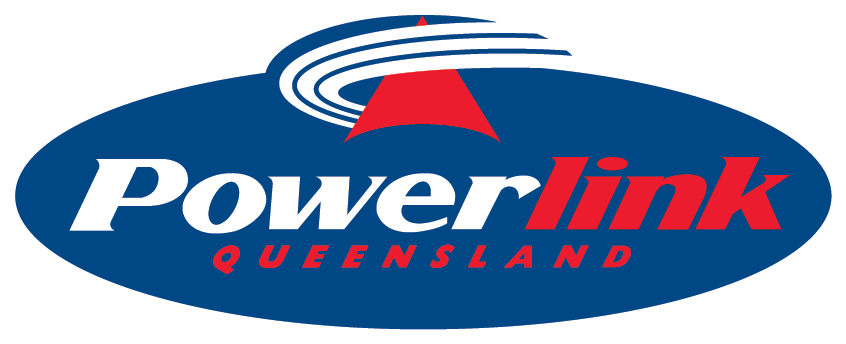The Australian Energy Market Operator (AEMO) and Powerlink are responsible for the planning and delivery of power system security services in Queensland. AEMO’s System Security Reports consider the need for services in regions of the National Electricity Market (NEM) over a five-to-10-year horizon. The reports assess system strength requirements, inertia shortfalls and Network Support and Control Ancillary Services (NSCAS) needs. Where AEMO declares a gap/shortfall for a power system security service(s) in Queensland, Powerlink is obliged to make services available within the timeframe set by AEMO.
Request for power system security services in central, southern and broader Queensland regions
Queensland Fault Level Shortfall AT GIN GIN NODE AND NSCAS GAP IN SOUTHern QUEENSLAND
Powerlink engaged with Registered Participants in the NEM and interested parties to ascertain and evaluate options (both non-network and network) to meet the power system security requirements identified in AEMO's 2021 System Security Reports and Update to 2021 System Security Reports (Reports), published in December 2021 and May 2022 respectively.
The Reports declared:
- an immediate system strength shortfall of up to 90 MVA at the Gin Gin fault level node to be addressed by March 2023 and
- a gap in southern Queensland of up to 250 MVAr to be addressed immediately.
In May 2022, Powerlink issued an EOI for potential proponents of non-network solutions to address the power system security requirements. Submissions closed 24 June 2022.
A copy of the Request for Power System Security Services document is available below.
NSCAS component evaluation and conclusion December 2022
Powerlink has concluded the engagement activities and assessment in relation to the immediate NSCAS gap and has published the findings in the Final Report - Part 1 available below.
Four submissions were received as part of the EOI to address the immediate need:
- Three confidential Battery Energy Storage Systems (BESS) were proposed at various locations in Queensland, with operational timings ranging from late 2024 to mid 2026; and
- CleanCo Queensland relating to the use of one their assets located in SEQ.
The timing of the BESS proposals and the potential network solution to install a reactor could not meet the immediate need. As a result, the BESS proposals and a new reactor were not assessed.
To address the NSCAS gap, Powerlink and CleanCo have entered into a Network Support Agreement that provides for CleanCo to operate its asset during times of reactive power shortfall until such time as the longer-term solution is in place. Powerlink assessed the long‑term need in the Regulatory Investment Test for Transmission for Managing voltages in South East Queensland, which was finalised in October 2023.
System Strength Shortfall at Gin Gin
Powerlink received submissions for eight different possible solutions for the system strength shortfall at Gin Gin. Powerlink reviewed all submissions and concluded that modifying the Townsville Power Station to allow it to operate in synchronous condenser mode when not generating was the least‑cost option. Powerlink has entered into a System Strength Services Agreement with the power station owner, Ratch Australia, to facilitate modification of the power station by mid-2025.
Powerlink has concluded the engagement activities and assessment in relation to the system strength shortfall at Gin Gin and has published the Final Report – Part 2, available below.
Further information
System strength is a measure of the stability of a power system under all reasonably possible operating conditions. It describes a system’s overall performance and its ability to recover quickly from sudden events.
Synchronous generators – like coal, gas and hydro power stations – provide system strength when they generate. System strength can also be provided by machines called synchronous condensers.
Asynchronous generators – like wind and solar – do not provide system strength and require system strength from another source.
While a system strength shortfall is very unlikely to impact the ongoing supply of electricity to customers in Queensland, it may limit an asynchronous generator's capability to export power to the grid. Queensland has a broad mix of generation types located across various regions in the state which can be accessed through our transmission network in the unlikely event that supply is impacted.
The Australian Energy Market Operator (AEMO) is responsible for setting the minimum required level of system strength throughout the National Electricity Market (NEM). When a region is identified as not having the required system strength, AEMO declares a shortfall.
As with other Market Notices, it is simply designed to send a signal to the market that a response is required.
AEMO periodically re-evaluates the required minimum fault levels throughout the NEM to minimise the risk of a sudden, widespread loss of supply due to an unforeseen event that impacts system strength.
AEMO has conducted studies of the Queensland power system. This modelling includes detailed models of synchronous generators from major coal-fired, gas-fired and hydro power stations in Queensland. Only inverter-based plants not subject to the system strength remediation requirements were considered in this requirement determination.
AEMO describes NSCAS as non-market ancillary services that may be delivered to maintain power system security and reliability, or to maintain or increase the power transfer capability of the transmission network. For example, these may include services which can be provided by plant with reactive power absorption capability such as synchronous generators or battery energy storage systems.
The Australian Energy Market Operator (AEMO) is responsible for assessing the voltage control requirements throughout the National Electricity Market (NEM). When a region is identified as not being able to maintain acceptable voltages to keep the power system in a secure state, AEMO declares a gap.
As with other Market Notices, it is simply designed to send a signal to the market that a response is required.
AEMO periodically re-evaluates system requirements throughout the NEM to minimise the risk of a sudden, widespread loss of supply due to an unforeseen event that impacts power system security.
Based on the synchronous generator dispatch associated with AEMO’s defined minimum fault level, AEMO has declared a gap in reactive power absorption in South East Queensland.

